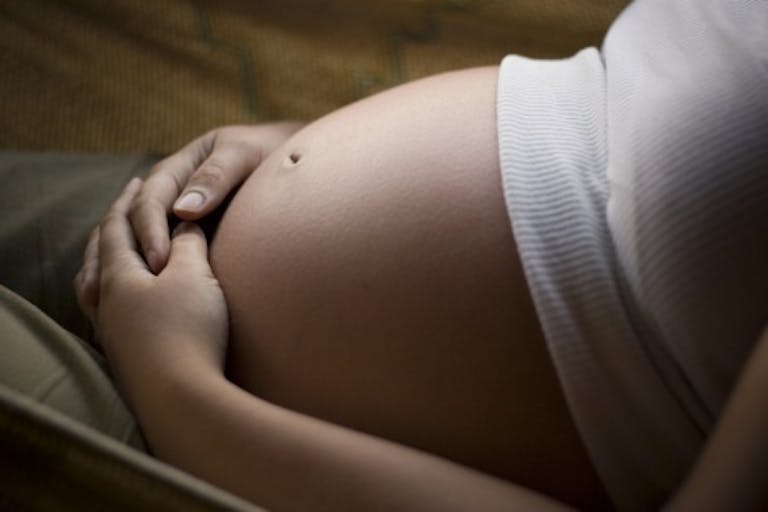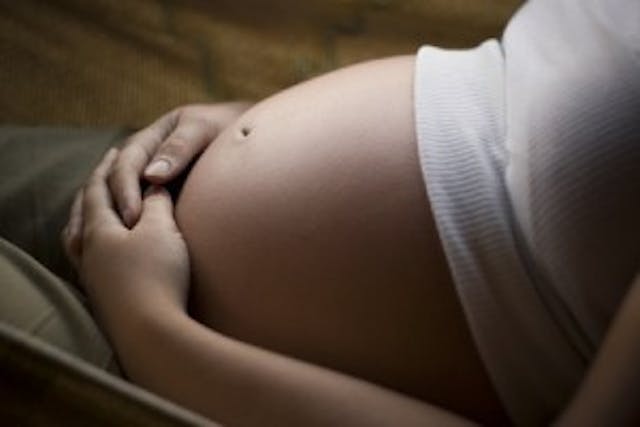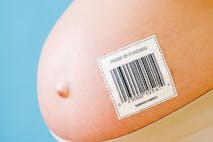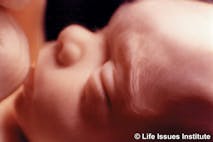
13th Texas county outlaws abortion and use of roads for ‘abortion trafficking’
Mark Lee Dickson
·
What are the implications of so many first time moms after 35?

Data just released from the Centers for Disease Control and Prevention (CDC) and National Center for Health Statistics (NCHS) shows that birth rates continue to rise for those women becoming first-time mothers when over 35. The number for 2012 was much higher than it was for the 1970s.
From key findings of the data brief:
The average age of women at first birth has risen over the past 4 decades (1–3). This increase is in part a reflection of the shift in first births to women 35 years and older. Delayed childbearing affects the size, composition, and future growth of the population in the United States (2). Increased health risks to older mothers, especially those 40 years and older, and their infants are well documented (4–7), first time older mothers are generally better educated and more likely to have more resources including higher incomes than those at the youngest reproductive ages (8).
While future consequences are mentioned, as are “[i]ncreased health risks to older mothers… and their infants…,” such issues are generally underscored.
The Washington Times pointed out that “[i]t is also socially acceptable to be an older mother, the 2010 Pew report found.”
Many outlets reporting on such findings do point out the possible risks and health consequences, but focus on these older moms discussing their excitement, readiness, and reasons for waiting. These reasons and their benefits are given much attention.
A benefit discussed is that of personal economic situations, as women have been waiting for a point when they feel they are more advanced with their career and set with their personal finances.
The delay of having the first born child, which in turn means having less children, has an impact not just on individual women, however, but on the economy overall. The Wall Street Journal acknowledges such possible consequences from the first paragraph of Neil Shah’s piece:
More American women are putting off becoming moms until after their best child-bearing years, a shift that reflects both the expanded role of women in the workforce and the nation’s shrinking fertility rate.
And as is mentioned further down in the piece:
The findings, along with new data from the CDC released Friday, show the trend of delayed childbearing among women in their late thirties and early forties continuing to pick up, with big implications for American society and the economy.
…
If women have their first kid in their late thirties or early forties, they’re also more likely to have smaller families, pushing down the nation’s fertility, which hit a new low in 2012. Lower fertility, in turn, can reduce the economy’s long-term growth potential by cutting the size of the productive workforce and leaving fewer people to support the elderly.
A piece from AP discusses the effect of reduced birth rates around the world, particularly how the 2008 crisis concerned couples enough financially to not have children. Years later, the rates have not increased. It is mentioned that “[f]or those who fear an overcrowded planet, this is good news. For the economy, not so good.”
The “fear of an overcrowded planet” is based on a myth though, which organizations such as the Population Research Institute have sought to debunk and educate society about.
The economic concerns, however, are real ones. AP discusses consequences for the workforce and care and replacing of the elderly in the United States as well as on a global level, and the effect of shrinking birth rates. The United States is one nation where women will have an average of 1.7 children in their lifetime. This is bad news when fertility rates need to be at 2.1 to replace those dying as well as maintain a constant population.
AP says that “[t]he effects on economies, personal wealth and living standards are far reaching[,]” and goes on to describe such effects being “[a] return to “normal” growth is unlikely,” “[r]educed pay and lifestyles,” and “[a] drag on household wealth.”
Economics is not the only concern. How do these older women get pregnant? Another aspect which is given attention but certainly not enough is that the older women get, the less likely they are to become pregnant naturally. As The Washington Times mentions:
Since 1978 and the birth of Louise Brown, the first “test-tube baby,” women in their 30s, 40s and even 50s have been able to give birth with artificial reproductive technology. Today, many, if not most, pregnancies after age 40 involve such technology because of a diminishing amount of healthy eggs and “poor embryo quality,” fertility researchers say.
High cost is certainly one concerned associated with artificial reproductive technology (ART) and in vitro fertilization (IVF). Putting a price tag on conception not only becomes a matter of paying thousands of dollars to become pregnant, but also treats the resulting child as a commodity to be bought and paid for, rather than created by a mother and father.
LifeSiteNews.com discussed in-depth a report from the Society for Assisted Reproductive Technology that about 1.7 percent of all babies born in the United States were conceived in laboratories:
A record-breaking total of 61,470 test-tube babies were successfully born in 2012, out of 165,172 who were conceived and placed inside a womb. Those numbers do not include embryos who were created and frozen for future use, died during the thawing process, or were destroyed for eugenic reasons…
Of those test-tube babies whom doctors attempted to implant, only 37 percent survived. Babies implanted into young mothers had higher rates of survival than those implanted into older women, but even they died more than half the time.
Women under the age of 35 gave birth to a live baby only 40.7 percent of the time after undergoing IVF or another procedure. For women between 35 and 37, that number dropped to 31.3 percent. For women between 38 and 40, the success rate was 22.2 percent, and for women between 41 and 42, it was 11.8 percent. Only 3.9 percent of embryos implanted in women 43 or older survived and were born.
The women discussed in reporting on older mothers were the few and fortunate ones then if they were able to become pregnant as a result of ART. These methods are not only costly with high failure rates, which means a high destruction of life, but also have such rates for those women who seem to depend on them as a last resort. Thus, it is not only morally problematic, but ineffective as well.
There is a reason why there is a length of time when women are intended to become pregnant and have children. It is natural for women to be mothers, and through the equally natural act with a man, rather than a form of medical technology. Opponents of ART and IVF still stress that the child created as a result is deserving of respect and dignity. What respect and dignity does such a child have when regarded as such a commodity though, when his or her parents feel entitled to purchase offspring?
As Dr. Catherine Herway, assistant director of maternal-fetal medicine at Staten Island University Hospital, in New York City, said for Health.com’s News & Views:
We have so many things I can test for and medications I can give you, but when it comes down to having children, Mother Nature allows us to have babies at a certain age for a reason. I don’t think we’re smarter than Mother Nature[.]
Live Action News is pro-life news and commentary from a pro-life perspective.
Contact editor@liveaction.org for questions, corrections, or if you are seeking permission to reprint any Live Action News content.
Guest Articles: To submit a guest article to Live Action News, email editor@liveaction.org with an attached Word document of 800-1000 words. Please also attach any photos relevant to your submission if applicable. If your submission is accepted for publication, you will be notified within three weeks. Guest articles are not compensated (see our Open License Agreement). Thank you for your interest in Live Action News!

Mark Lee Dickson
·
Human Interest
Nancy Flanders
·
Issues
Bridget Sielicki
·
International
Angeline Tan
·
Issues
Cassy Cooke
·
Issues
Sheena Rodriguez
·
Fact Checks
Rebecca Downs
·
Newsbreak
Rebecca Downs
·
Newsbreak
Rebecca Downs
·
Newsbreak
Rebecca Downs
·
Newsbreak
Rebecca Downs
·